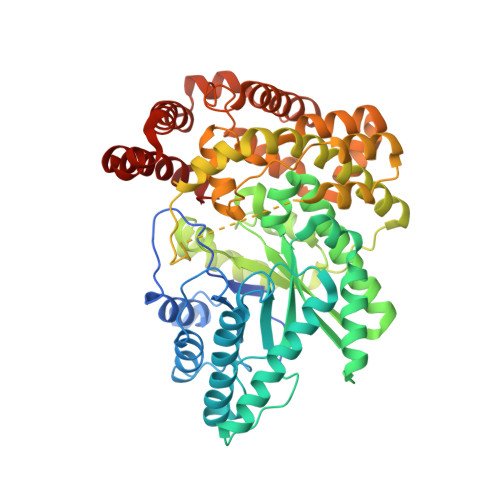Structure of an archaeal-type phosphoenolpyruvate carboxylase sensitive to inhibition by aspartate.
Dharmarajan, L., Kraszewski, J.L., Mukhopadhyay, B., Dunten, P.W.(2011) Proteins 79: 1820-1829
- PubMed: 21491491
- DOI: https://doi.org/10.1002/prot.23006
- Primary Citation of Related Structures:
3ODM - PubMed Abstract:
The crystal structure of an archaeal-type phosphoenolpyruvate carboxylase from Clostridium perfringens has been determined based on X-ray data extending to 3 Å. The asymmetric unit of the structure includes two tetramers (each a dimer-of-dimers) of the enzyme. The precipitant, malonate, employed for the crystallization is itself a weak inhibitor of phosphoenolpyruvate carboxylase and a malonate molecule is seen in the active-site in the crystal structure. The allosteric binding sites for aspartate (an inhibitor) and glucose-6-phosphate (an activator) observed in the Escherichia coli and Zea mays phosphoenolpyruvate carboxylase structures, respectively, are not conserved in the C. perfringens structure. Aspartate inhibits the C. perfringens enzyme competitively with respect to the substrate, Mg(++.) phosphoenolpyruvate. A mechanism for inhibition is proposed based on the structure and sequence comparisons with other archaeal-type phosphoenolpyruvate carboxylases with differing sensitivity to inhibition by aspartate.
Organizational Affiliation:
Virginia Bioinformatics Institute, Bioinformatics and Computational Biology Graduate Program, Virginia Polytechnic Institute and State University, Blacksburg, Virginia 24061, USA.
















